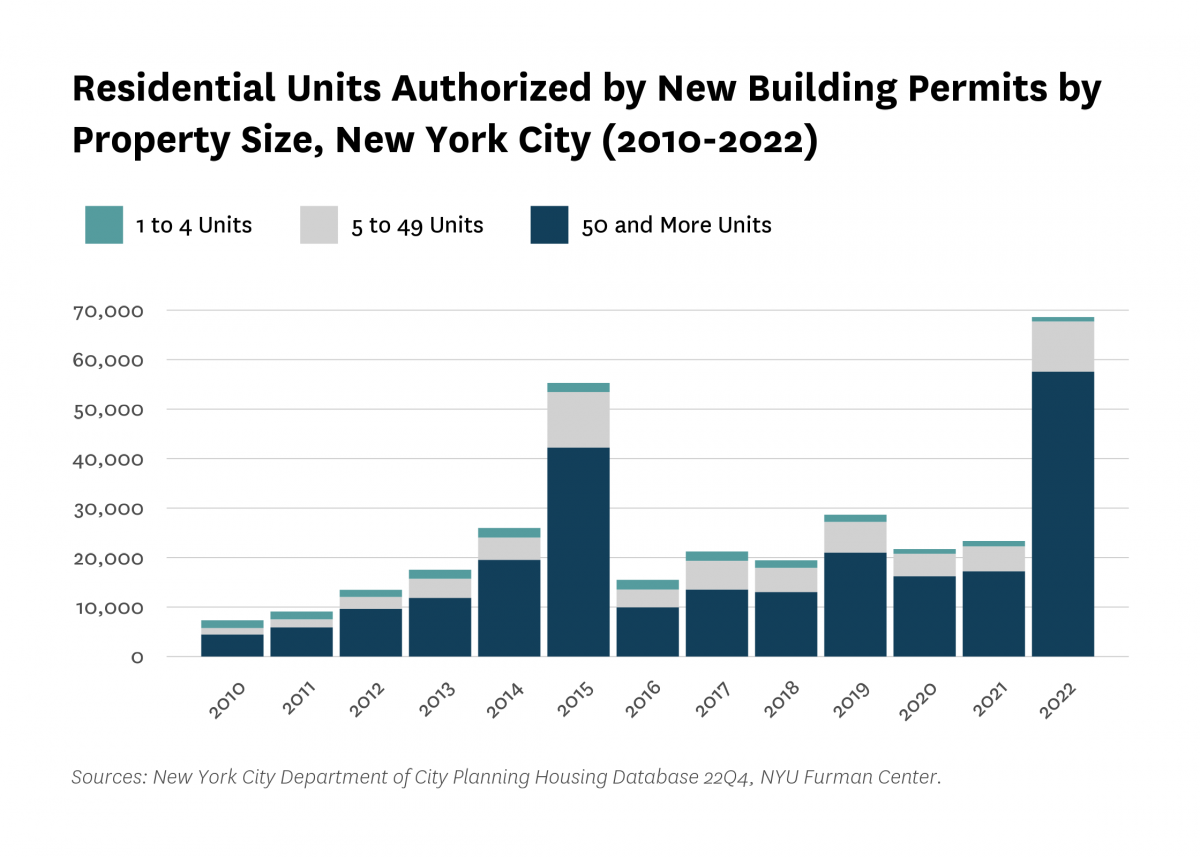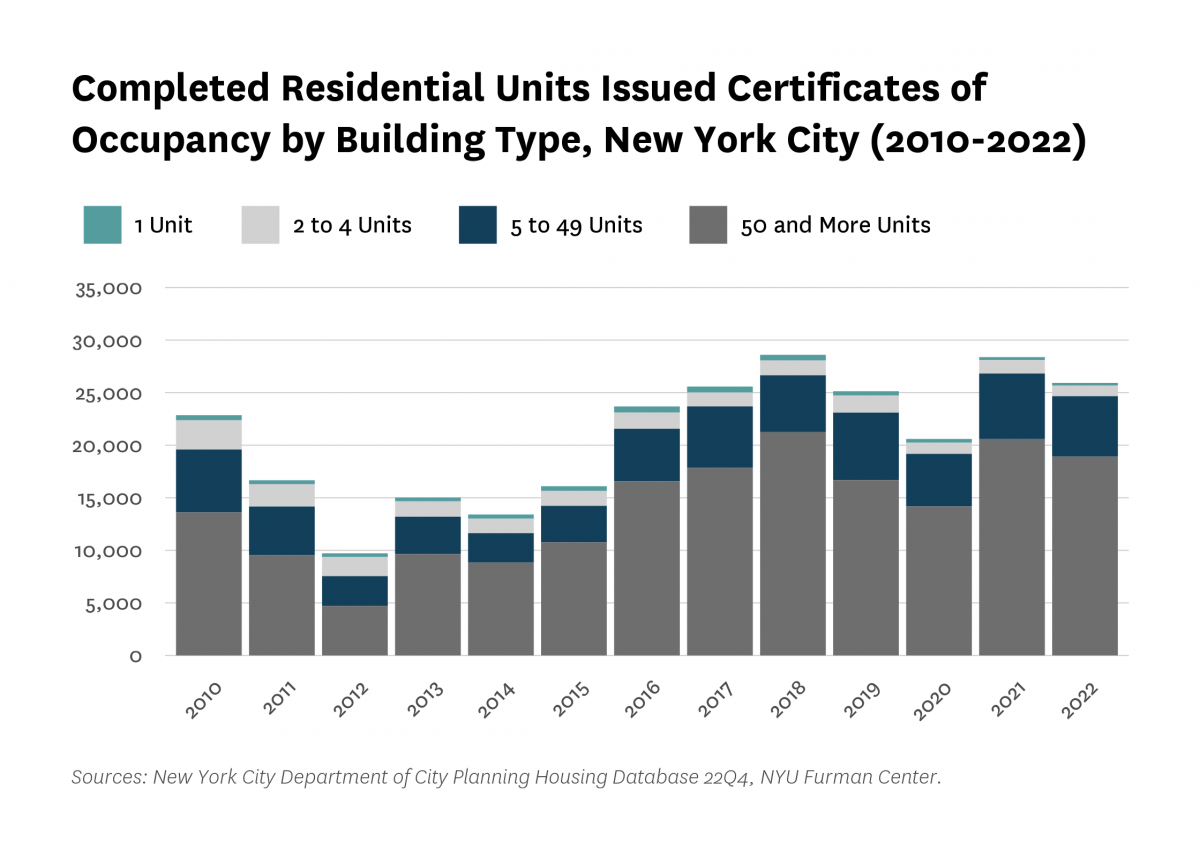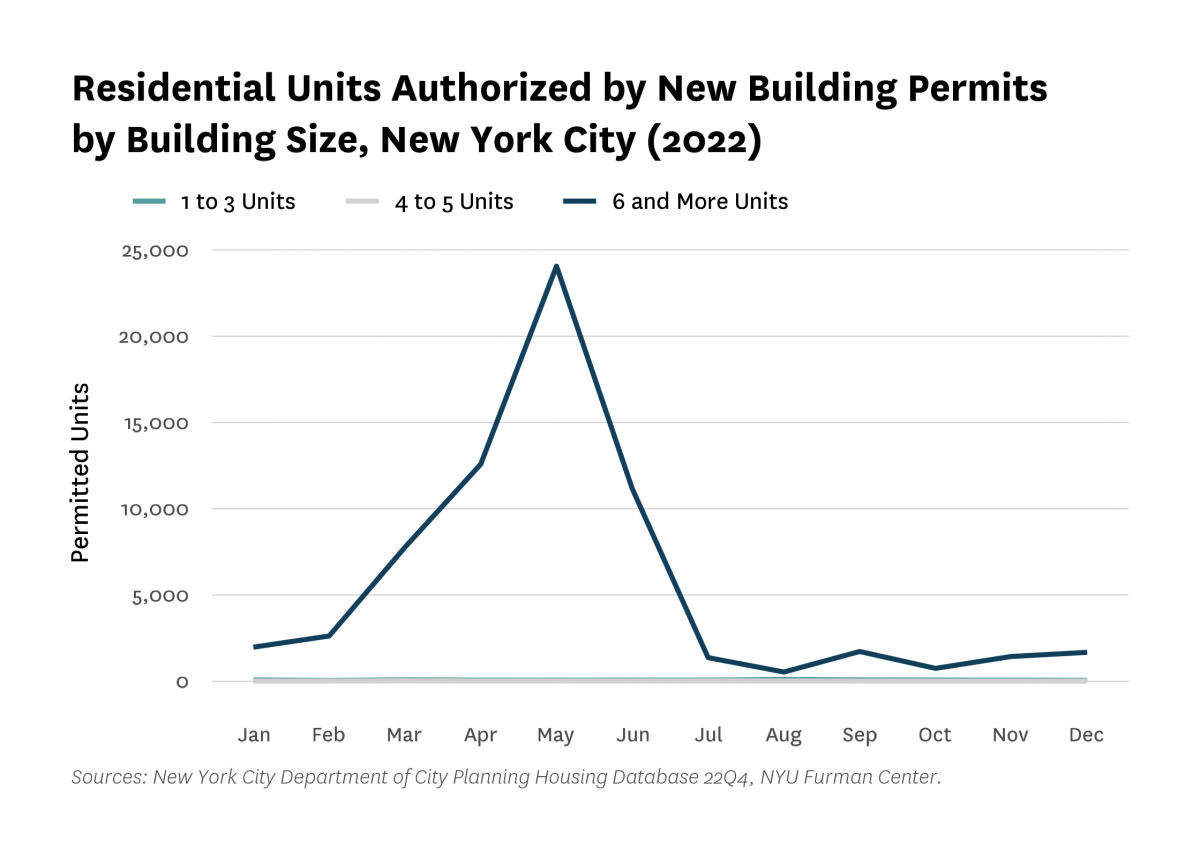 Sign Up
Facebook
Twitter
LinkedIn
Sign Up
Facebook
Twitter
LinkedIn
State of the City 2022
New building permits for residential units soared in the first half of 2022, as developers tried to meet deadlines to qualify for the state’s 421-a tax exemption, which was scheduled to (and did) sunset in June of that year. The total number of residential units completed in 2022 declined year over year from 2021, but remained relatively high compared to previous years. The increase in permitting activity in 2022 surpassed a similar spike in 2015, the last time the 421-a tax exemption sunsetted. The 2015 spike led to an elevated level of completions in the following few years, and we may see a similar trend in the next few years as the projects permitted in 2022 receive their certificates of occupancy. At the same time, the conditions in 2022 might lead to a different pattern: interest rates significantly increased in 2022, which may mean that some projects that received a building permit will not be built because financing costs are too high. In addition, developers may experience unanticipated delays in approvals to start construction as the City struggles with staffing. Further, the deadline to complete permitted units that anticipate using 421-a is stricter than it was in 2015 (properties must be completed by 2026).
The number of residential units authorized by new building permits nearly tripled in 2022, as compared to 2021.
The number of housing units authorized by new building permits in New York City climbed to 68,610 in 2022, from 23,352 units in 2021, a 193.8 percent increase. Increases in the number of units in larger, multifamily structures with 5 to 49 units (+101.8% to 10,118) and in buildings with 50 or more units (+233.9% to 57,570) drove the overall increase in permitted units. The result is that new buildings with 50 or more units accounted for the majority (83.9%) of new units authorized by new building permits, up 10.1 percentage points from 2021. On the other hand, the number of permitted units for new one- to four-unit buildings declined (-15.8% to 922)—those small buildings are ineligible to receive 421-a, and were less likely to be affected by its expiration. The rise in total number of units authorized in 2022 surpassed the previous peak of permitting activity in 2015 (55,297 units). As noted above, both of those spikes were associated with a rush of developers applying for permits before legislation authorizing the 421-a tax exemption was set to expire.

The number of units completed in 2022 declined compared to 2021, but was the third highest in over a decade.
Between 2021 and 2022, the total number of new units that received a certificate of occupancy decreased by 8.6 percent, to 25,927 units. The majority (72.9%) of new units authorized for occupancy in 2022 were in 50+ unit buildings, a decline of 8.1 percent from 2021, to 18,912 units. Units receiving a certificate of occupancy also decreased for single-family homes (-9.6% to 254), for 2-4 unit buildings (-21.1% to 1,010 units), and for 5-49 unit buildings (-7.8% to 5,751 units). Despite the declines, 2022’s total number of completed residential units surpassed most years since 2010, only falling behind 2018 (28,598 units) and 2021 (28,383).

A majority of new building permits for buildings with 6+ units were authorized in the first half of 2022, prior to the sunsetting of the 421-a tax exemption.
New York City had a total of 68,610 new units permitted in 2022, with the majority of permits authorized in the first half of the year for buildings with 6 and more units. 60,147 permitted units for new buildings with 6 and more units were issued from January to June 2022, compared to 7,481 permits from July to Dec. 2022. New building permits for buildings with 6 and more units peaked in May 2022, at 24,058 permits. The steep rise in large residential building permits over the first five months of 2022 is consistent with builders filing in time to start construction before the June expiration of 421-a. Because 421-a required that construction actually begin in order to be eligible for the tax break, it appears that a number of developers received permits in May, in order to begin construction by June.
